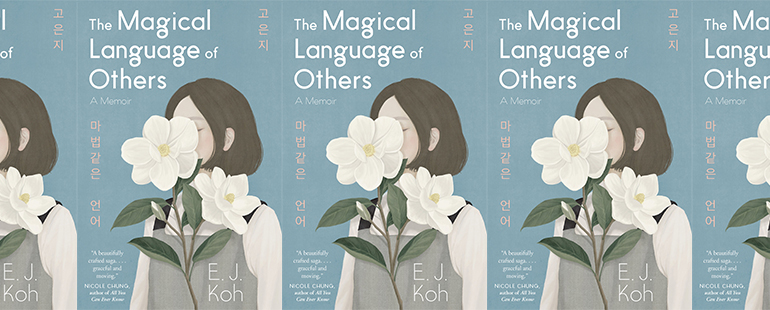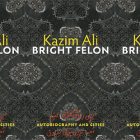The Many Voices of Memory in The Magical Language of Others

One of the most compelling elements of memoir is the possibility of encountering a voice whose experience somehow resonates with your own, particularly when that voice has been traditionally underrepresented in literature. Writers of such stories have over the last several years also been questioning the very form of conventional memoir; rather than presenting a narrative built around recollections of significant moments relayed directly to the reader, many are pushing formal boundaries to develop a deeper expression of the self. Carmen Maria Machado, for instance, turns the memoir into an exploration of genre in In the Dream House, which focuses on themes of love, abuse, and healing; readers encounter noir, daydream, shipwreck, and even Choose Your Own Adventure passages that contribute to her overall presentation of narrative as dream house. The cumulative impact of these varied modes of looking reveals how we tell ourselves different stories to make sense of what we have gone through. Ted Chiang expresses a similar sentiment beautifully in his short story “The Truth of Fact, the Truth of Feeling,” writing, “People are made of stories. Our memories are not the impartial accumulation of every second we’ve lived; they’re the narrative that we assembled out of selected moments.”
Since memoir is a narrative we create for ourselves, it makes sense to also think of memoir as extending beyond the bounds of our own memories. We are made up of the stories we tell ourselves about ourselves, but we rely just as much on the stories that others tell us. There is always a tangled web of familial and cultural stories that predate our existence, though these stories very much influence who we eventually become, for better or for worse. The multivocal aspect inherent in memory comes alive in E.J. Koh’s recently published memoir The Magical Language of Others. The book is structured around Koh’s recollections of her childhood, adolescence, and young adulthood, but also relies heavily on letters her mother had written to her during the time Koh’s parents were living in Korea. Koh’s father accepted a well-paying job when Koh was fifteen, leading her mother and father to move to Seoul while Koh and her brother remained in the United States.
Koh translates each of the letters into English, but a copy of the original letter is also included after each of these translations. Koh retains the minor mistranslations, one-word English insertions, and other unique idiosyncrasies in her mother’s letters, which maintains the liveliness of her mother’s voice in the English translation for those of us who, unfortunately, cannot read Korean. Koh writes: “what we knew only in Korean or only in English, she tried to put together. I read the letter out loud to hear the sounds. Otherwise, I could not recognize the words and their shapes, filling the page, covering the creases. In these letters, I heard her voice, closer than it felt over the phone.” In reading these letters, we are able to view the family’s period of separation through Koh’s eyes, as well as her mother’s—a movement between letter and memory that makes up most of the book. In fact, the very first chapter is one of Koh’s mother’s letters and, though there is a note on translation that precedes it, this letter is the reader’s first step into the book. Before Koh’s voice reaches us, we hear her mother.
But Koh’s work reaches even further back beyond her mother’s letters and her mother’s experiences. Another narrative thread that forms The Magical Language of Others is the story of Koh’s paternal grandmother, Kumiko, a woman who was thrust by historical circumstances into a move from Japan to Jeju Island in the early twentieth century. We learn that Kumiko’s family had come to Japan from Korea, which had been annexed by Japan in 1910. Thus, Kumiko is described as having grown up within Japan and speaking Japanese believing that she was Japanese—why would she believe otherwise? Moreover, Japan has a long history of discrimination and violence against Koreans, including those born and raised in Japan. Koh writes of their situation: “[Kumiko’s parents] had changed their language; their names, long erased; and their manners, learned…The trouble with hiding is that either you are found before you are killed, or you are killed before you are found—death hides you forever.” Koh writes about her grandmother’s parents “confessing” that they were Korean and that they moved to Japan from Jeju Island after Japan had annexed the area. More heartbreakingly, the family’s return to Jeju coincides with the Jeju Island Massacre on April 3, 1948. The generational trauma, along with the mixing of multiple cultural identities and languages that Kumiko experienced, is part of Koh’s narrative identity, too.
Her grandmother’s experiences resonate throughout the book, both through Koh’s direct interactions with her and the information she learned about her grandmother when she was older. Koh notes that her grandmother used her Korean name but “kept another unknown to everyone”—this name being her Japanese name. Koh recalls one memory with her grandmother, saying, “One day I overheard her speaking strangely inside Yaohan Plaza at the sushi counter to the packing ladies. She never talked in this manner with the other grandmothers, or with her children and grandchildren…Their exchange was alluring, then pleading and jesting, with a ricochet of smiles. But my grandmother would not teach me Japanese.” By this point in the book, readers have already been introduced to Koh’s own interest in Japanese language through her time studying the language in Japan. But the slow unfolding of Kumiko’s story later in the memoir, after we have become familiar with Koh’s narrative voice, creates a temporal loop. Her grandmother’s influence lingers, perhaps, through Koh’s skill with and affinity towards the Japanese language. As with many narratives, it is difficult to pinpoint where our influences originate.
Outside the structurally interesting approach Koh takes to writing memoir, the prose in The Magical Language of Others is itself beautiful and evocative. She deploys her control of language to create vivid scenes that never feel overdone or affected, even in moments that could fall into melodrama, as in her recollections of her teenage years. Likewise, it would be easy for the shifts between letter and memory to feel abrupt, creating a disjointed and forced link between two stylistically disparate elements of the book. But it is Koh’s truly conversational approach—her desire to include the voices of those who matter to her so deeply—that creates a fluid reading experience. Far from feeling disjointed, the movement between her mother’s letters and Koh’s recollections works to flesh out Koh’s memories of her adolescence and her depictions of herself as a young adult. While The Magical Language of Others is undeniably Koh’s book, she manages to show how familial stories make up a part of who she is, even as she relays her exploits in California, Korea, and Japan. While a memoir can often feel myopic or even self-indulgent, Koh’s presents clearly the truth that is tucked between the pages of all memoirs—that all of us are pieced together by a multitude of stories told to us and that we, in turn, tell to others.



